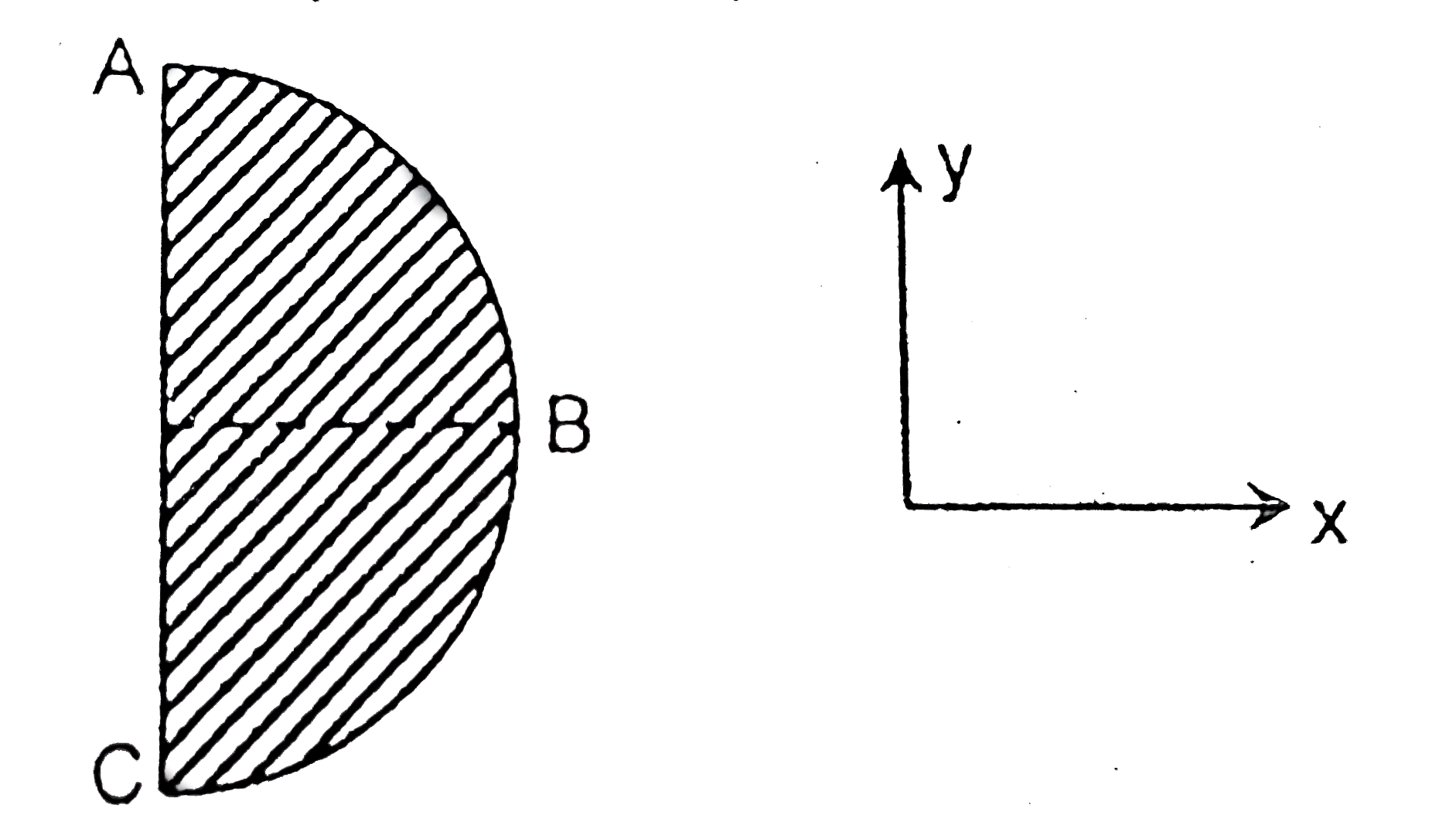A copper disc and a carbon disc of same radius are assembled alternately and co-axially to make a cylindrical conductor whose temperature coefficient conductor whose temperature coefficient of resistance is almost equal to zero. Ratio of thickness of the copper and the carbon disc is (neglect change in length. αCU and −αC represent the temperature coefficients of resistivities and pcu carbon at room temperature respectively)
pCαC/pCUαCU
pCUαCU/pCαC
pCαCU/pCUαC
pCUαC/pCαCU
The correct Answer is:A
To solve the problem, we need to determine the ratio of the thickness of the copper disc to the carbon disc in a cylindrical conductor made of these materials. The key point is that the temperature coefficient of resistance of the combined cylindrical conductor is almost equal to zero.
1. Understanding the Problem:
We have a copper disc and a carbon disc of the same radius, assembled alternately to form a cylindrical conductor. We need to find the ratio of their thicknesses, given that the overall temperature coefficient of resistance is approximately zero.
2. Temperature Coefficient of Resistance:
The temperature coefficient of resistance for copper is denoted as αCu and for carbon as −αC. The negative sign for carbon indicates that its resistance decreases with increasing temperature.
3. Condition for Zero Temperature Coefficient:
For the overall temperature coefficient of resistance to be zero, the contributions from both materials must balance each other out. Mathematically, this can be expressed as:
αCu⋅tCu+(−αC)⋅tC=0
where tCu and tC are the thicknesses of the copper and carbon discs, respectively.
4. Rearranging the Equation:
Rearranging the equation gives us:
αCu⋅tCu=αC⋅tC
5. Finding the Ratio:
We can express the ratio of the thicknesses as:
tCutC=αCαCu
6. Final Expression:
Thus, the ratio of the thickness of the copper disc to the carbon disc is:
tCutC=αCαCu
We have a copper disc and a carbon disc of the same radius, assembled alternately to form a cylindrical conductor. We need to find the ratio of their thicknesses, given that the overall temperature coefficient of resistance is approximately zero.
The temperature coefficient of resistance for copper is denoted as αCu and for carbon as −αC. The negative sign for carbon indicates that its resistance decreases with increasing temperature.
For the overall temperature coefficient of resistance to be zero, the contributions from both materials must balance each other out. Mathematically, this can be expressed as:
αCu⋅tCu+(−αC)⋅tC=0
where tCu and tC are the thicknesses of the copper and carbon discs, respectively.
Rearranging the equation gives us:
αCu⋅tCu=αC⋅tC
We can express the ratio of the thicknesses as:
tCutC=αCαCu
Thus, the ratio of the thickness of the copper disc to the carbon disc is:
tCutC=αCαCu
Topper's Solved these Questions
Similar Questions
The temperature coefficient of resistance of conductor varies as α(T)=3T2+2T. If R0 is resistance at T = 0and R is resistance at T, then
View SolutionTwo conductors have the same resistance at 0∘C but their temperature coefficient of resistanc are α1andα2. The respective temperature coefficients of their series and parallel combinations are nearly
View SolutionWrite down a simple relationship to show the varriation of resistance with temperature. Define temperature coefficient of resistance. In what way the temperature coffecient of carbon is different from that of the common conductors ?
View SolutionThe ratio of the resistances of a conductor at a temperature of 15∘C to its resistance at a temperature of 37.5∘C is 4:5. The temperature coefficient of resistance of the conductor is
View SolutionA current carrying conductor is connected with a cell, after some time temperature of conductor is increased by 1 unit. The percentage change in its resistivity is (Here α is temperature coefficient of resistivity)
View SolutionTwo equal resistance at 0∘C with temperature coefficient of resistance α1 and α2 joined in series act as a single resistance in a circuit the temperature coefficient of their single resistance will be
View SolutionCoefficient of linear expnsion of material of resistor is α . Its temperature coefficient of resistivity and resistance are αp and αR respectively , the correct relation is .
View SolutionTwo metallic wires. A and B of equal dimensions but made of different materials, having resistivities p and 2p temperature coefficients of resistivities 2aipha and α, are connected in series. The temperature coefficient of resistance of the composite wire equals
View SolutionThere is a cylindrical wire whose temperature coefficient of resistivity is 6×10−3^∘C−1 and co-efficient of linear expansion in 10−3^∘C−1. Its temperature coefficient of resistance is N×10−3^∘c−1 . Then, the value of N is:
View SolutionA semi circular disc of radius R is placed on a smooth horizontal surface. Figure shows top view of this. If temperature is increased by Δt then displacement of (coefficient of linear expansion is α):

View Solution